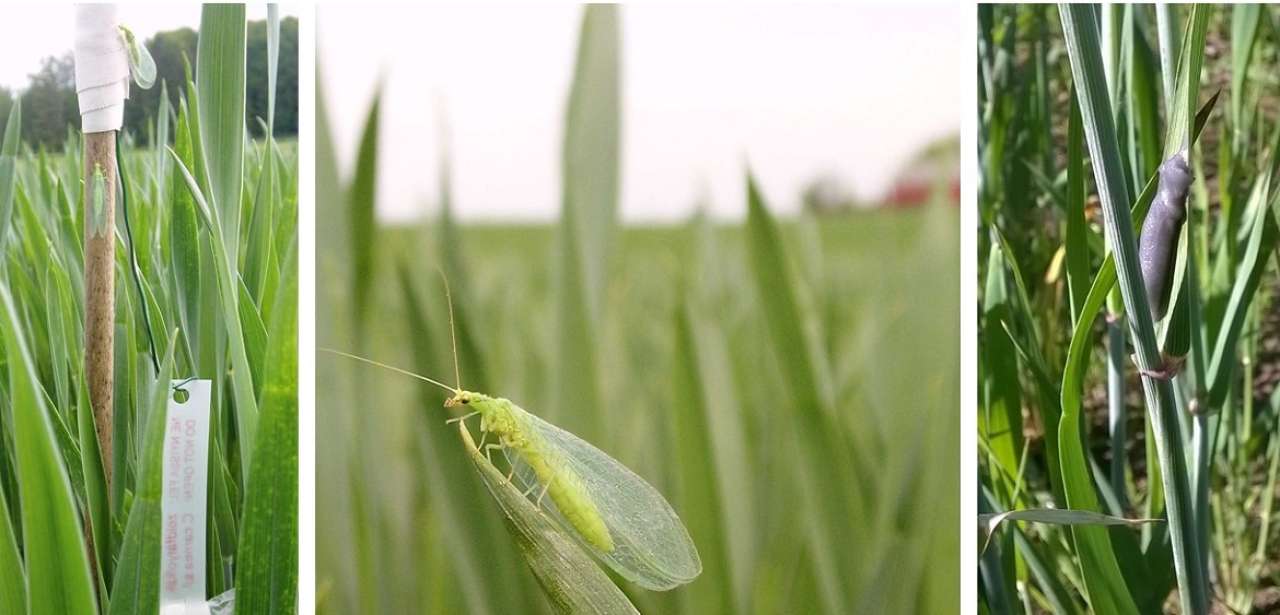Volatiles and habitat management to support the functional response of natural enemies

Lacewings Chrysoperla carnae s.l. (middle) are important natural enemies of pest insects used in biological pest management. Volatile dispensers (left) and odour paste (right) containing plant volatiles which are attracting lacewings and increase aphid control in cereals.
Photos: Gunda Thöming
A rich biodiversity is required to provide good habitats for insects, and this is a key for good ecosystem services, such as biological pest management. Current research shows that habitat management to support natural enemies combined with the use of volatiles that increase the functional response of these beneficials can result in an even more effective and resilient biological pest management.
In Norway we have a lot of good possibilities to manage our agricultural landscape in a way that help beneficial insects. We must ensure good habitats for beneficials with adequate food, shelter, and places to overwinter in our agricultural landscape. Thereby beneficials can establish, participate efficient in pest management, and reduce the need for traditional chemical pesticides.
In collaboration with farmers, we established a pest management strategy which combines plant volatiles, floral field edges and overwintering places to support lacewings. Lacewings are important natural occurring beneficial insects, which are used to control i.a. aphids. Lacewings have as many other insects a very sensitive sense of smell.
In collaboration with colleagues in Hungary we have developed a volatile blend which attracts lacewings and increases their egg laying. Using these volatiles in the field results in an increased number of hungry lacewing larvae, which are feeding on pest insects and thus, increasing biological pest control. The volatile blend is imitating the odour from plants which are attacked by pest insects. The plant is using these volatiles as SOS-signal and lacewings use these cues to find an optimal place for the next generation.
Together with the Semiochemical industry in the US and researcher in Sweden we have tested a biodegradable odour paste for biological management of i.a. aphids. After four years field experiments in cereals, we have seen that a pest management strategy combining plant volatiles, floral field edges and overwintering places to support lacewings is able to increase biological control of aphids. The amount of lacewings has increased while the amount of aphids was kept bellow the economic damage threshold. The use of traditional chemical pesticides has been reduced substantially.
Contacts

Publications
Abstract
No abstract has been registered
Abstract
No abstract has been registered
Abstract
No abstract has been registered
